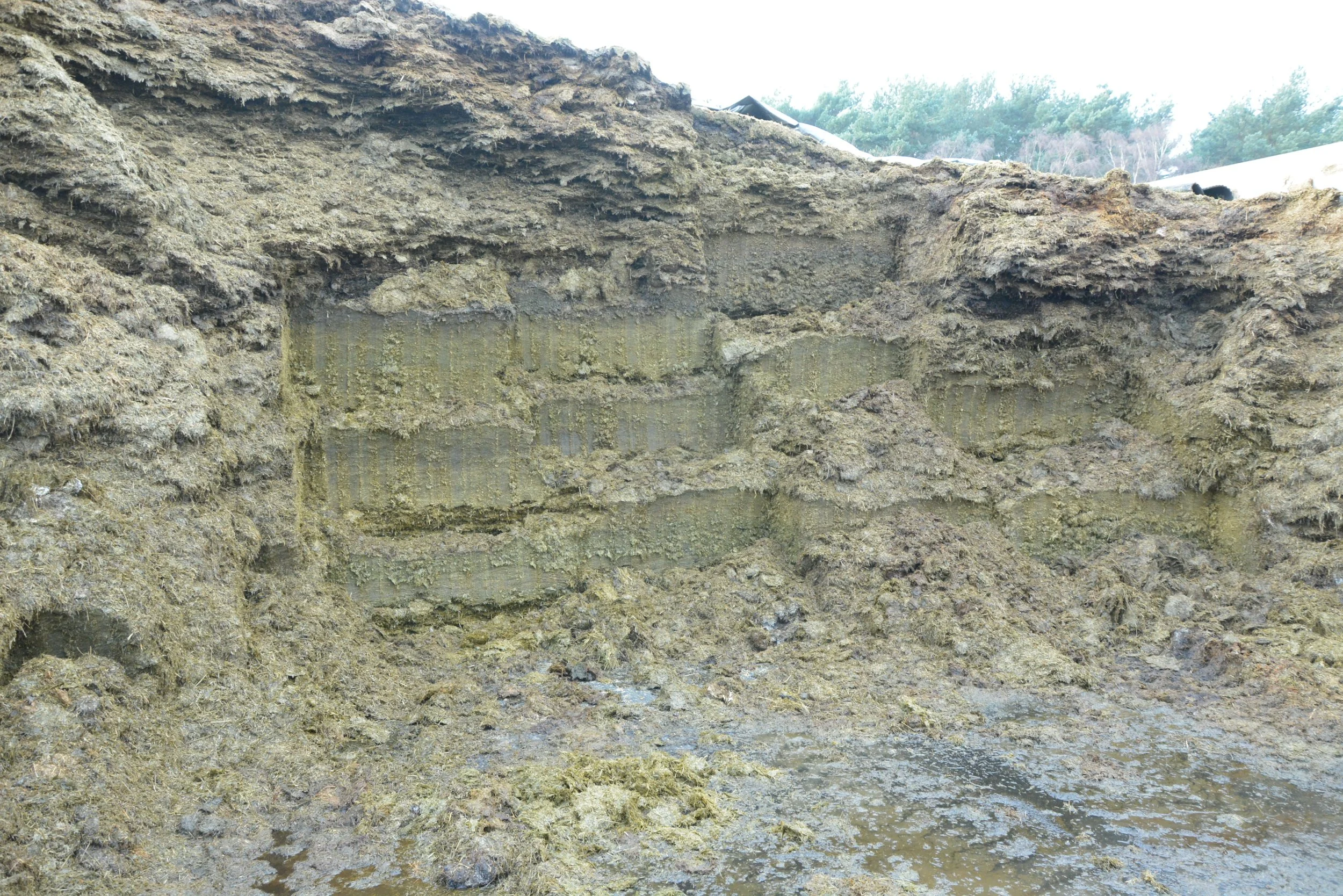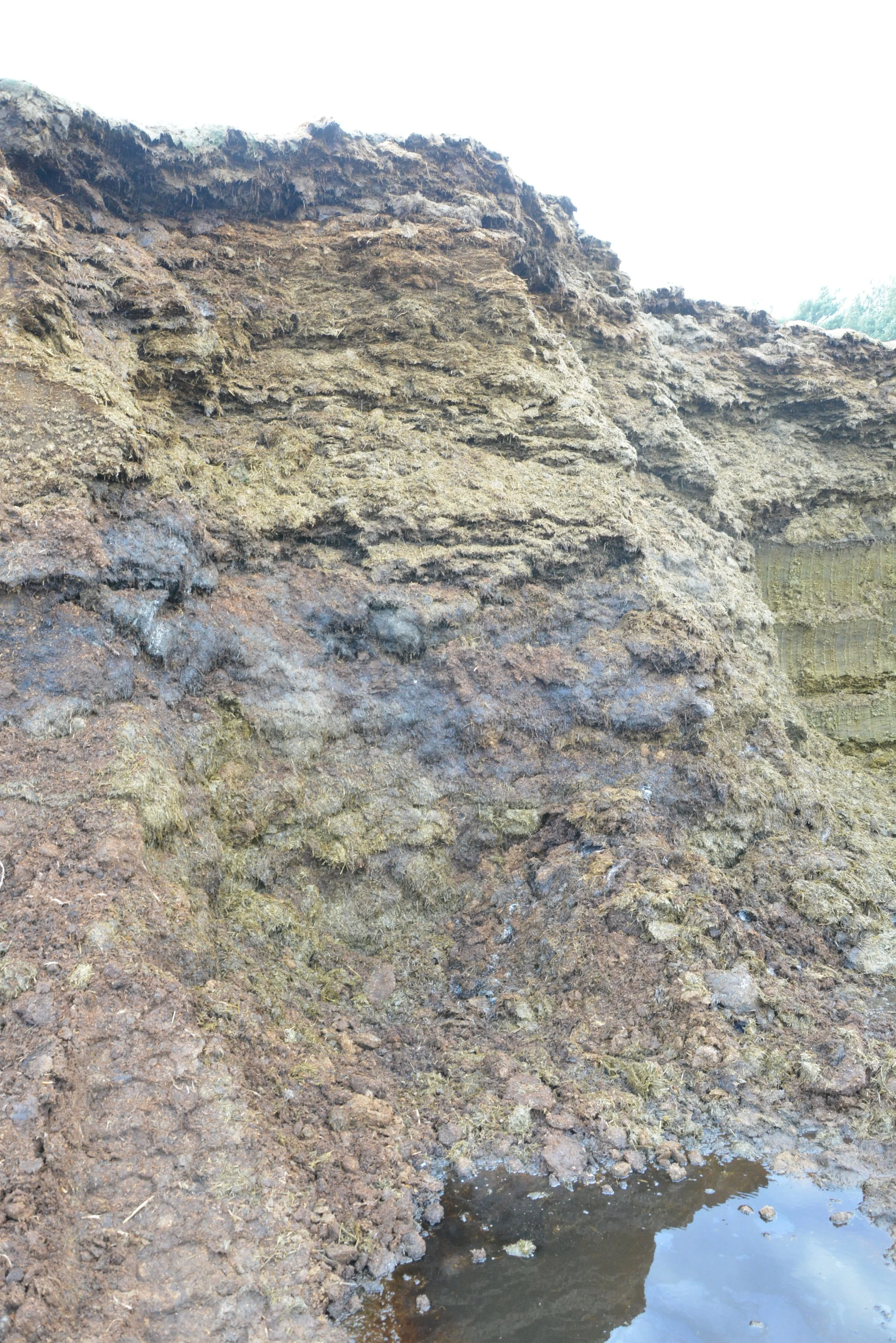Why wet silage is bad silage
I had the pleasure/misfortune (delete as you see appropriate) to be watching a well known internet video maker talking about his silage. The farm had just got their silage analysis results back and were delighted/happy with the findings. The silage had been made in very wet conditions and they were worried it would be poor quality but the results convinced them that they had “got away with it”.
“Our silage results are good apart from the low dry matter, and low sugars…. why are the sugars so low?” - or something along those lines. They were convinced that the grass was well grown and cut at the optimal growth stage so were suprised by the low sugars. But it shouldn’t be a surprise, because there are three silage values that are always tightly linked together, low dry matter, pH and available sugars.
Why is the sugar in silage lower than in the grass cut?
The growing grass uses its little green solar panels (leaves) to produce sugar that it then converts into starch and cellulose to actually grow the plant. It also stores some of the sugars to fuel its respiration, or just to do some living. These sugars are made during the day, some are stored and some are used up at night so there is a slight variation in crop sugar levels through the day.
As soon as you cut the crop, the solar panels cease to function as the photosynthesis stops. But the respiration doesn’t stop so some of the sugars stored in the crop continue to be used up - this is why you need to wilt fast, to minimise this phase. Much of the sugars will hopefully remain and it is these that will fuel the fermentation process as the bacteria “convert” the sugars into acid that ultimately reduces the pH.
So it is inevitable that the silage you make will have a lower sugar content than the grass you cut, but why does wet silage have lower sugar content than you might have expected?
Does leaving mown silage down for longer use more sugars?
The simple answer to this question is yes - the longer the mown silage is down in the field, the more sugar you are losing by respiration. The only way to stop the respiration in the plant is to stress (wilt) it enough that the plant stomata all close up. These are the tiny vents that allow gases in and out of the plant and they will close when there is enough drought stress and this will then stop the respiration.
This might contribute to the almost non existent sugar in wet silage but it isn’t the real cause. Incidentally in a maize or whole crop it’s the growth stage at harvest that mostly determines the dry matter of the silage not the actual amount of wilting - obviously.
Why is wet silage so bad?
Wet silage - whatever the crop - is a real problem for a couple of reasons but the absolute killer is this link between dry matter, pH and sugars. This link dictates that wet silage will always have very low pH and very low available sugars. Now I’m sure there are going to be some exceptions that prove the rule, and whilst I could see that you may get a wet, acidic silage that still has some sugar left, it is AWAYS going to have a very low pH.
To understand this I’m going to try and explain it without taking you back to the school chemistry labs - but ultimately it’s all about buffer capacity.
What is silage buffer capacity?
The buffer capacity is a way of describing how hard it is to get the pH in something to change. In general it's described as the amount of a strong acid you need to add to a solution to get its pH to drop by, let's say, 0.1pH. Low dry matter silage will have a higher buffer capacity than normal DM silage so is more resistant to pH change. Now pH is complicated because it’s all to do with electrons and molecules so I’m going to use an elastic band analogy. The elastic band is the buffer that resists a pH change.
Imagine some wet silage in your neighbours clamp (because yours is lovely stuff) beginning to ferment. Low dry matter content means the silage has a high buffer capacity (a strong elastic band) so even though the bacteria are producing some nice strong lactic acid, the pH just isn’t budging. They continue to produce more and more of the lactic acid until eventually the elastic band breaks and the pH plummets like a stone. In effect a mini reaction is taking place where most of the strong acid gets temporarily converted into a weak acid but this is then reversed into strong acid when the elastic band breaks. This sudden drop in pH causes all the fermentation activity to stop but it also means the pH ends up much much lower than would normally occur.
Where did the silage sugar go?
The bacteria were very busy using this sugar to create all that acid, so it’s common for the sugar in wet silage to be zero or very little more. So now you have a silage with very low pH and no sugar. The lack of sugar is bad enough but it’s not the end of the problems. Potentially an even bigger problem if you’re feeding to cows or sheep is maintaining the pH of the rumen which is vitally important for healthy productive livestock. It’s also bad news for your silage clamp wall and floors because the lower the pH the more damaging the effluent attack will be.
What else is wrong with low dry matter silage?
You’re going to have a lot of effluent to deal with too so the chances of a pollution incident are higher with wet silage. When you are disposing of the effluent you also have a much higher chance of scorching or plain killing off the grass if you apply too much low pH effluent onto the ground. It’s also likely that you have reduced the forage intake of your cattle too, because even if you balance the pH in the ration, the heavy wet silage means they just can’t take in the same volume of dry matter and remember the feed value is all in the dry matter not the water.
Unfortunately it doesn’t stop there, the bad news just keeps coming, because there are high chances of aerobic instability in wet silage too. Now I know it’s usual to link aerobic instability to high dry matter, where the silage isn’t compacted properly and it lets air into the face, but it is a problem with wet silage for another reason.
Wet silage with a high buffer capacity takes a long time to reach stability. The pH takes a long time to fall so all the other microbes in the clamp still remain active. This means there is more of an establish colony of yeasts and molds ready to spring back into action when you open the silage up. This means wet silage goes off quickly too.
So in conclusion, you don’t “get away with it” if you make wet silage because wet silage is bad silage. Getting the dry matter right is a skill and a challenge but it’s not something you can just ignore.
If you want to discuss how to reduce the chances of making wet silage or would like to discuss any other aspects covered in this series, contact me at jeremy@silageconsultant.co.uk


